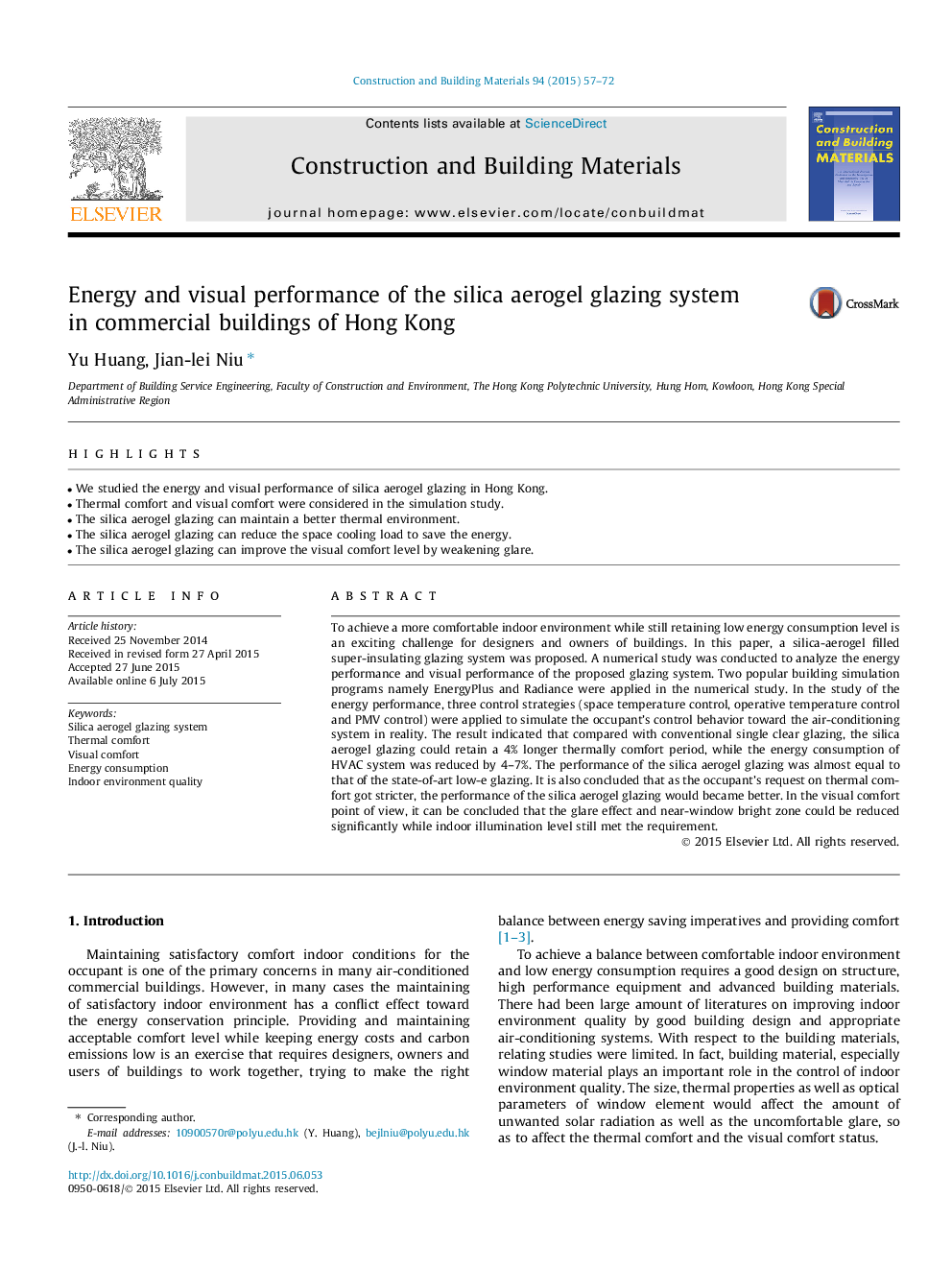| Article ID | Journal | Published Year | Pages | File Type |
|---|---|---|---|---|
| 6719886 | Construction and Building Materials | 2015 | 16 Pages |
Abstract
To achieve a more comfortable indoor environment while still retaining low energy consumption level is an exciting challenge for designers and owners of buildings. In this paper, a silica-aerogel filled super-insulating glazing system was proposed. A numerical study was conducted to analyze the energy performance and visual performance of the proposed glazing system. Two popular building simulation programs namely EnergyPlus and Radiance were applied in the numerical study. In the study of the energy performance, three control strategies (space temperature control, operative temperature control and PMV control) were applied to simulate the occupant's control behavior toward the air-conditioning system in reality. The result indicated that compared with conventional single clear glazing, the silica aerogel glazing could retain a 4% longer thermally comfort period, while the energy consumption of HVAC system was reduced by 4-7%. The performance of the silica aerogel glazing was almost equal to that of the state-of-art low-e glazing. It is also concluded that as the occupant's request on thermal comfort got stricter, the performance of the silica aerogel glazing would became better. In the visual comfort point of view, it can be concluded that the glare effect and near-window bright zone could be reduced significantly while indoor illumination level still met the requirement.
Related Topics
Physical Sciences and Engineering
Engineering
Civil and Structural Engineering
Authors
Yu Huang, Jian-lei Niu,
